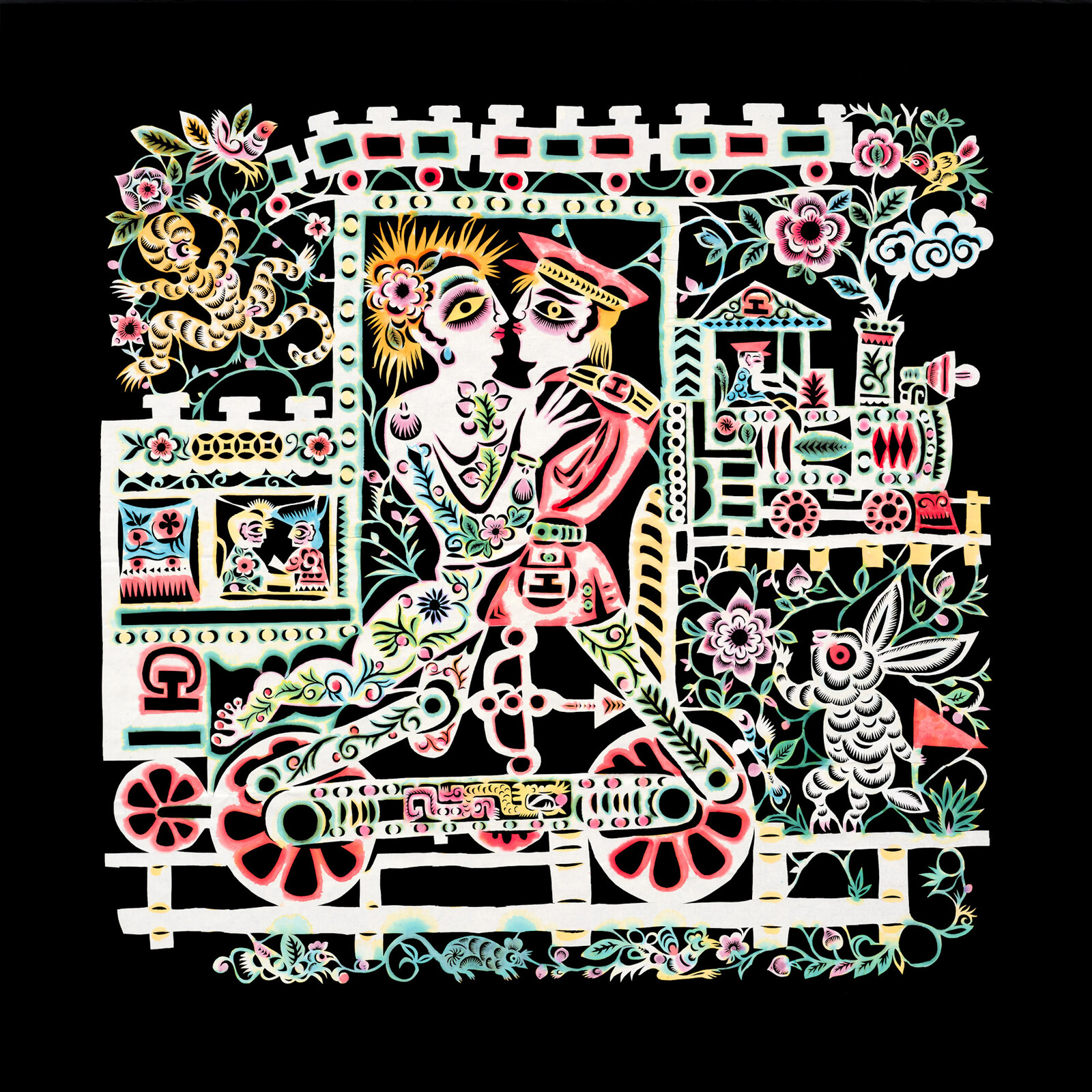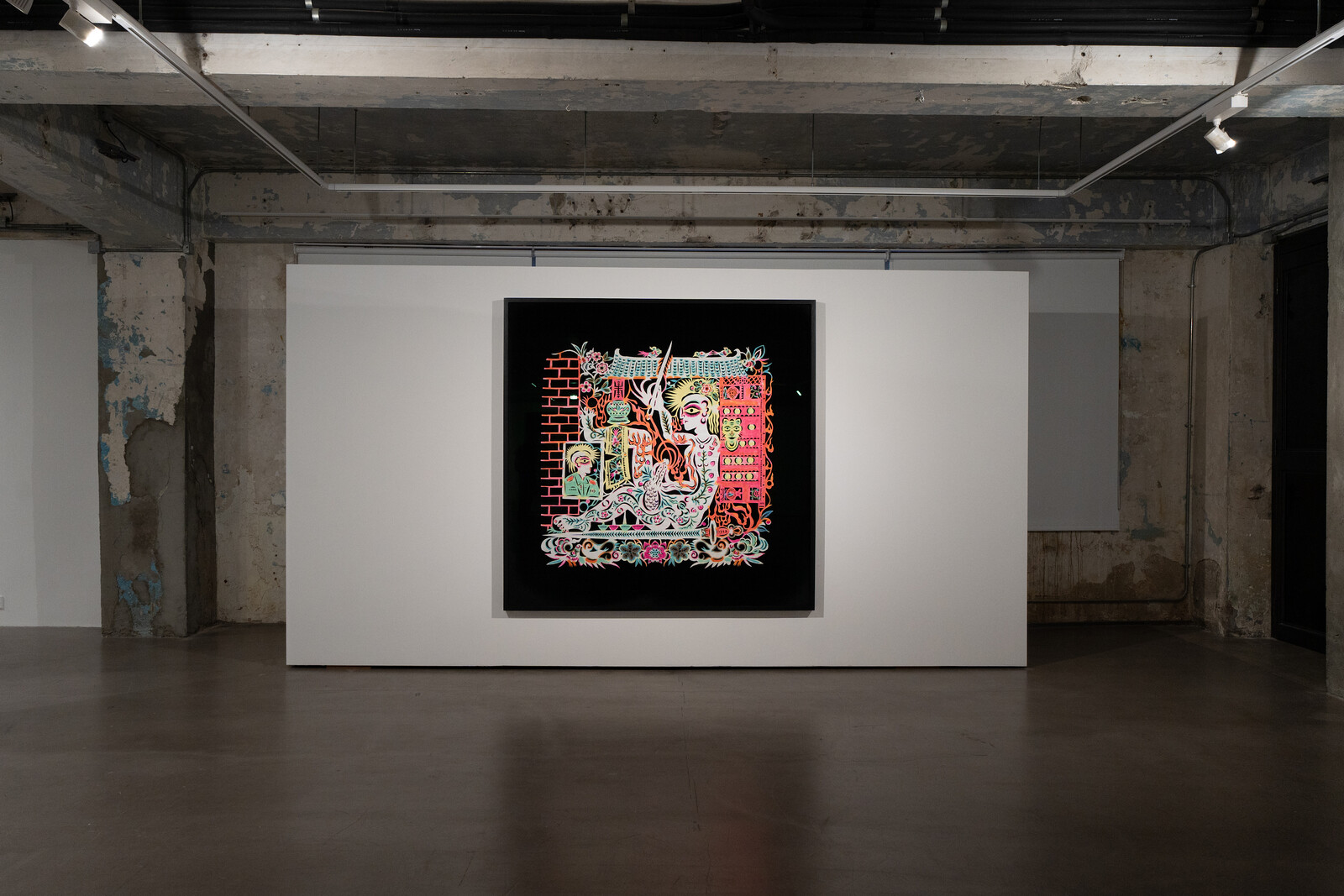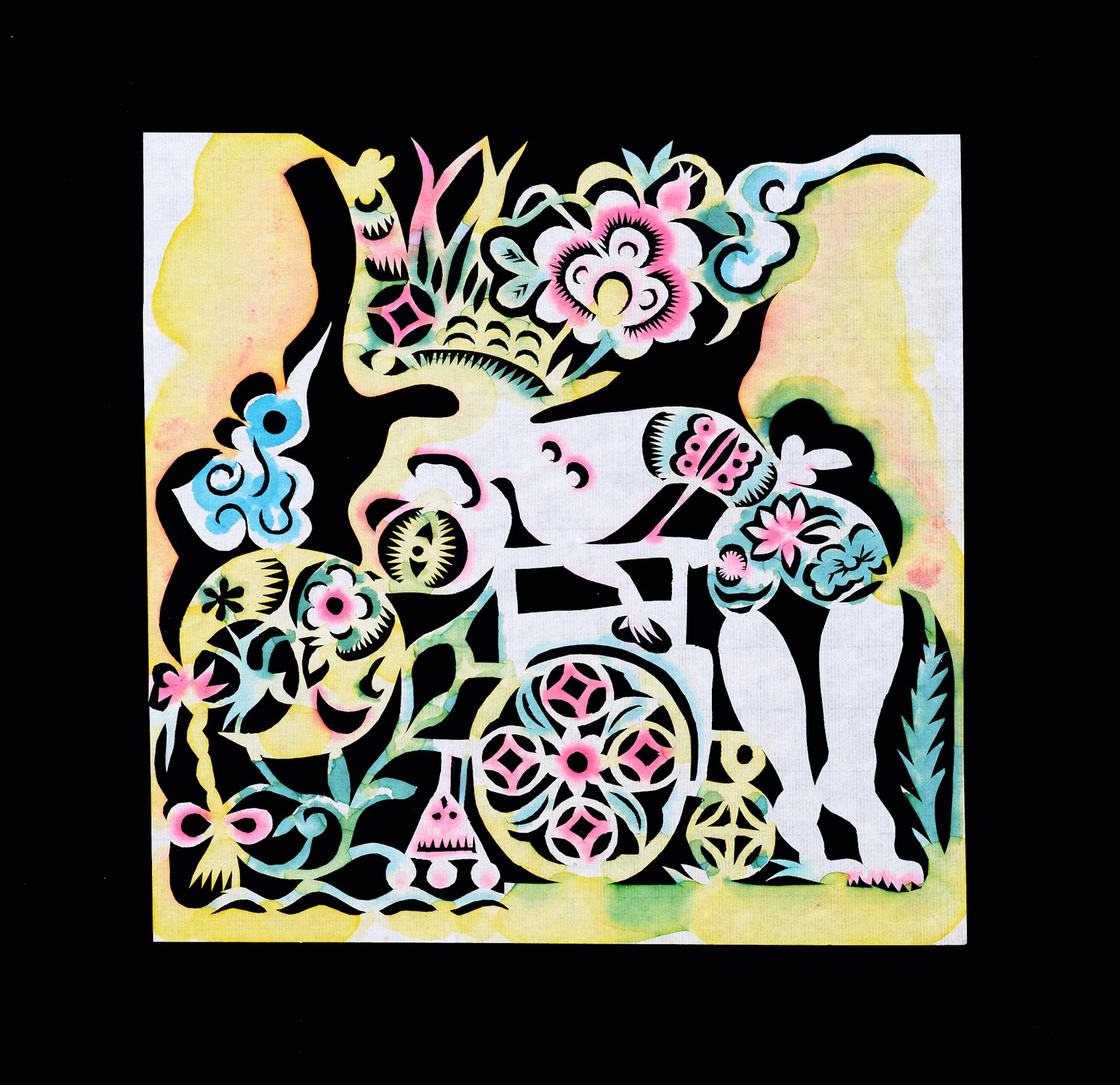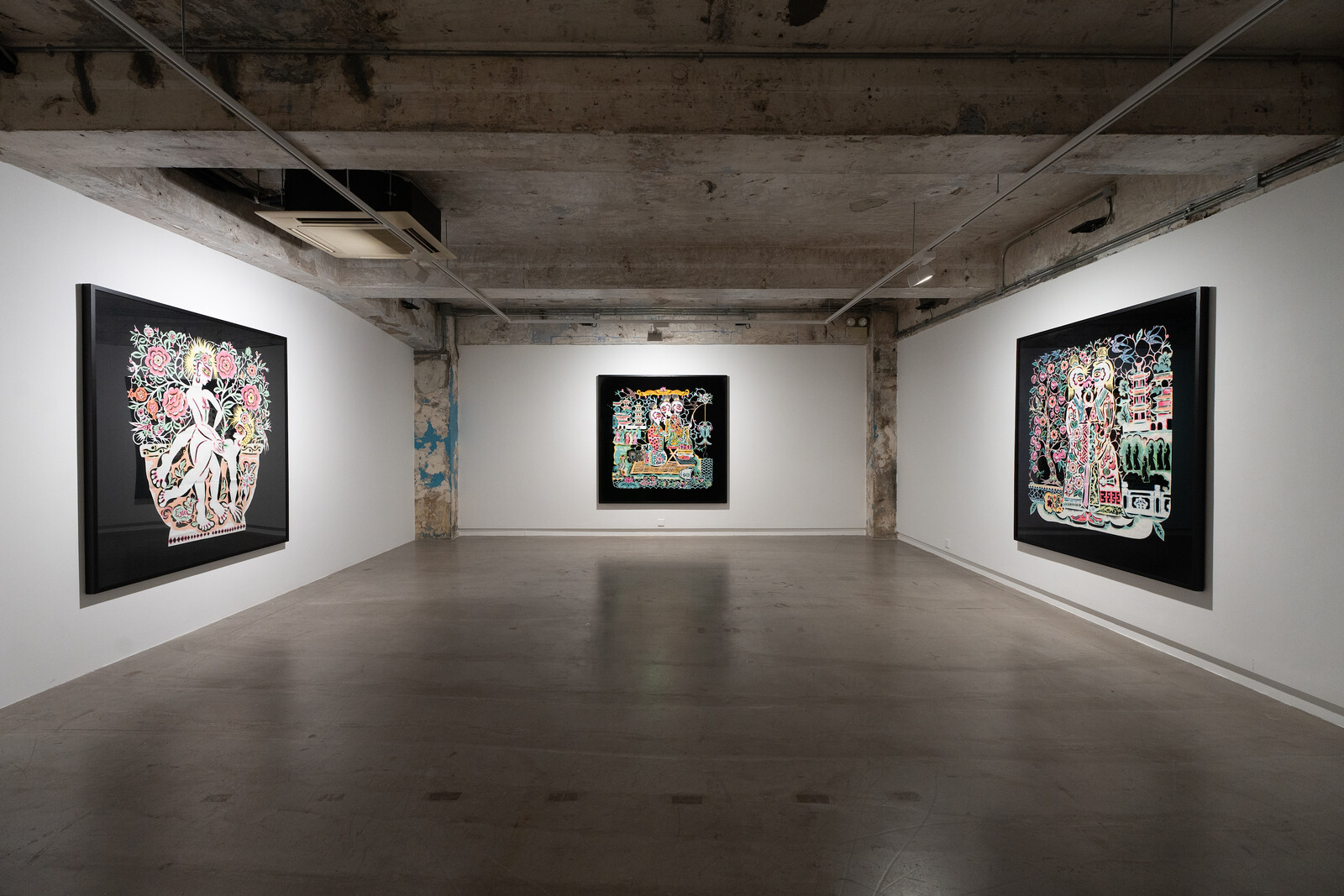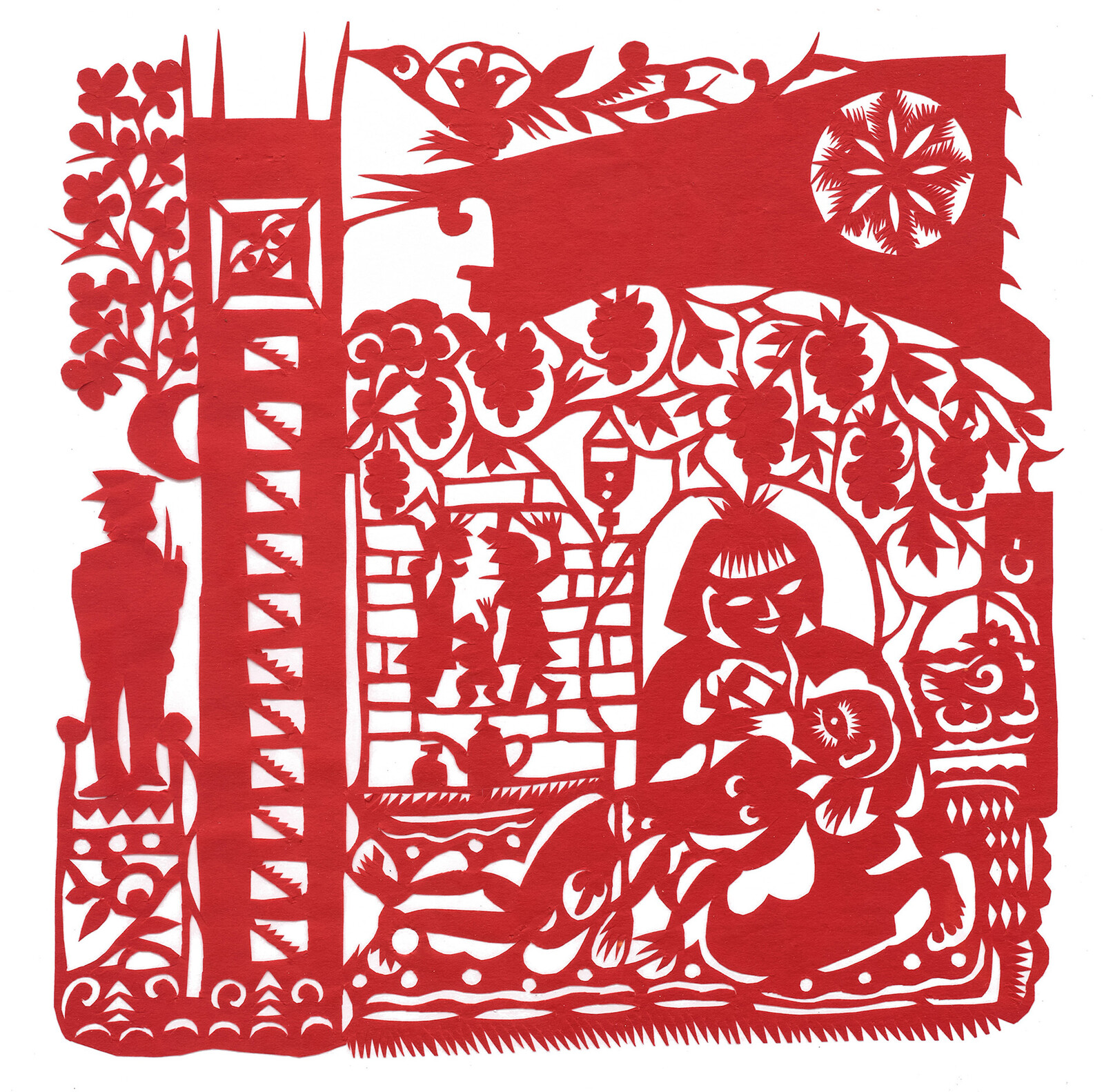There’s a mythological aura to Xiyadie, who learned the ancient matrilineal folk art of paper-cutting from his mother while growing up in China’s Shaanxi province. The artist’s name means “Siberian Butterfly,” an insect known for its beauty and resilience. He gave it to himself in 2010, when the Beijing LGBT Center invited him to show his work to the public for the first time, five years after he moved to the Chinese capital as a migrant worker to support his family. Before that 2010 show, the artist’s paper-cuts, created using Xuan paper and luminously pigmented with natural dyes, were private portals into a closeted world: an entanglement of diaristic records of clandestine gay affairs and fantasies of living a freely queer life. Since then, he has exhibited internationally (notably in the curated exhibition at this year’s Venice Biennale) but less so domestically, making this exhibition in Hong Kong—the artist’s largest to date—an important milestone.
Among the earliest papercuts in “Butterfly Dream” is Train (1985–86), which recounts one of Xiyadie’s first sexual encounters with a train attendant while en route to Xi’an. Mounted on black velvet, a large, square image plane is defined by a central train carriage in which an arched-back Xiyadie, whose naked body is covered with flowers on leafy vines, falls into the arms of his uniformed paramour. Their legs morph into coupling rods that connect to the bar linking the train’s wheels below; it’s a visceral unison, in which man and machine find harmony in rhythmic motion. Nearby, Xiyadie’s former lover appears in another large papercut, Sewn (1999), as a framed portrait positioned in front of the artist’s naked, flower-marked body, which fills a central space encircled by the characteristics of a village house. Sitting on the floor, his back leans on a heavy door with a lion-head doorknocker while his feet are pressed up against the brick wall in front of him. He sews the head of his penis with flame-like tendrils using a giant needle that punctures the tiled roof above: what the artist has likened to an act of breaking through tradition’s confines, much like the abundant blooms that flower around him.
The tension between custom and natural desire has long charged Xiyadie’s work. One small red papercutting from 1982, Double Happiness, expresses what may well have been a private joke at the time: hewing to traditional aesthetics, the character for “double joy,” which commonly appears in wedding decorations, mimics a smiling face, as two winged figures above lean in for a kiss while their penises angle towards each other. More recent large-format papercuts, Don’t worry, mom is spinning thread in the next room and Sorting Sweet Potatoes (both 2019), each show a fellating pair hiding in the artist’s family home as his parents are busy elsewhere. But while his compositions remain taboo in the context of a society that remains largely conservative to queer love, Xiyadie’s mastery of an ancient folk art heralds coming futures. As professor Shi Yao Zeng notes in The Siberian Butterfly, a 2012 documentary screened in the exhibition that shows Xiyadie deftly handling scissors and paper as he describes his practice as a stage on which he can dance and dream freely, paper-cutting is a living tradition, and Xiyadie’s significance as a folk artist is his fusion of new and inherited ideas.
At one point in that documentary, Xiyadie is reluctant to show an explicit work to professor Shi and his colleague when prompted, and presents the less overt Cave (2012) instead. The symmetrical papercut is composed like a Rorschach test, with a large, central face bordered by an identical pair of conjoined, kissing bodies. Without missing a beat, both elders connect the image to the myth of siblings Fuxi and Nüwa, the sole survivors of an apocalyptic flood tasked with repopulating the world, concluding that Xiyadie is using an ancient myth to express modern love. Three other myths appear in “Butterfly Dream,” placing gay love in the historical record so as to make space for a collective coming out. Commissioned by Sunpride Foundation, Split Peach (2022) visualizes courtier Mizi Xia sharing a sweet peach with Duke Ling of Wei; Cut Sleeve (2022) depicts Emperor Ai cutting his silk sleeve to avoid rousing his lover Dong Xian from bed; and Crying Fish (2022) shows King Anxi of Wei reassuring Lord Longyang of his irreplaceable beauty.
But while Xiyadie’s work is anchored to the intimacies of queer sexuality, his work is about more than sex, and indeed the perception of queerness as a purely sexual identity—as demonstrated by Hoping (2000), a small cutting that shows the artist’s late son, who had cerebral palsy, with butterfly wings. Expressing a desire to alleviate his son’s suffering by freeing him of all constraints, Hoping amplifies a longing at the heart of the artist’s practice, where love and acceptance function as concrete antidotes to the dream of freedom and its real-world limitations. Xiyadie gestures towards this in The Siberian Butterfly, when he wishes people would use the term comrade instead of homosexual because it expresses equality. One papercutting included in the central exhibition at the Venice Biennale diagrams this reframing. The monumental Kaiyang (2021) takes the orgiastic activity of a former Beijing bathhouse into Tiananmen’s open square, filling the charged space in front of The Forbidden City with bodies pleasuring each other with abandon: a vision of liberation.
